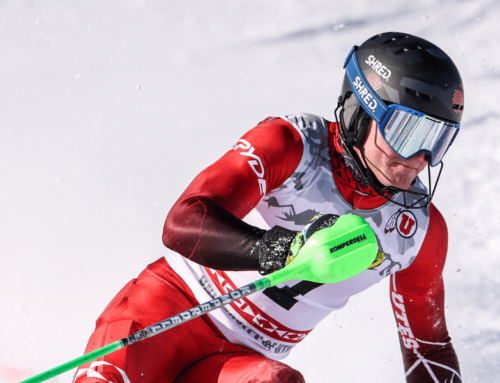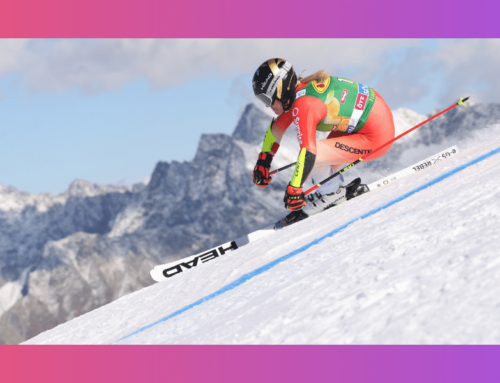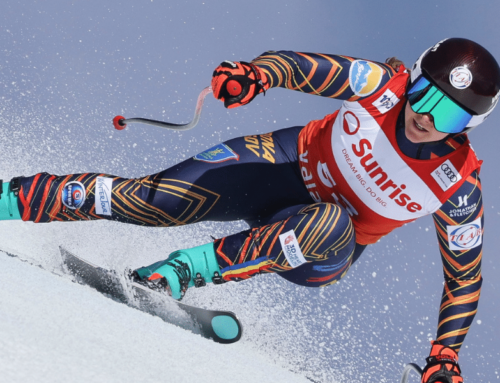Rethinking Collegiate Skiing
EISA’s Isac Hedstroem, UNH, Photo: Stephen Cloutier
Is College Ski Racing Becoming Unreachable?
I was very excited to read the articles by Craig Zolan and Chan Morgan on collegiate skiing. Undoubtedly, college skiing provides a viable pathway to the World Cup, settling the debate over its role in development. However, a more significant problem is creeping into the sport, which isn’t addressed in their arguments. There is increasing competition for roster spots on NCAA ski teams. While skiing in college has always been and should continue to be a challenge, it has reached an unsustainable level, requiring multiple postgraduate years and hundreds of thousands of dollars.
The Unique Experience of College Skiing
NCAA ski racing offers a low-cost opportunity for ski racers, with teams covering much of the race entries, training costs, and some equipment. College skiing allows athletes to continue ski racing for four years with reduced expenses. This can be a massive relief for parents who have made a significant financial commitment during youth ski racing.
USCSA: A Viable Alternative?
Although some suggest USCSA as an alternative to the competitive NCAA ranks, most high-level club and academy racers find very few USCSA teams offering the competition and support they are accustomed to. This reality does not diminish the great experiences many have had with USCSA racing but highlights its weaknesses as an alternative to NCAA skiing. While some club teams operate at a high level with coaches, full-time training, and a high degree of institutional support, most USCSA programs cannot match the competitiveness of NCAA teams. Additionally, ski academy graduates have shown little appetite for USCSA skiing; instead, they frequently take the position of NCAA or bust (retire).
Different Objectives of Clubs vs. NCAA Ski Teams
What often goes unaddressed in conversations with parents and young skiers is the different objectives of clubs and academies from NCAA ski programs. Clubs and academies aim to produce positive experiences to help athletes get the most out of their skiing careers. On the other hand, college coaches have team performance goals. Some strive to win national championships, while others aim to send an athlete to the end-of-year NCAA Championships.
However, athletic administrators hold NCAA teams to performance standards, regardless of their goals. While they still care about the skiing experience, they have priorities that differ from clubs and academies. Poor performance by a college ski team can result in the coach being fired
The European Tipping Point
The increasing competitiveness of college skiing has helped elevate the league and brought benefits to youth teams surrounding them. However, has the league’s attractiveness to Europeans reached a tipping point? As more Europeans enter the collegiate ranks, there is a cascading effect across the NCAA. At schools in RMISA (Rocky Mountain Intercollegiate Ski Association), it is common to see teams that are almost devoid of Americans. Five schools had less than five Americans on their rosters this past season. With these teams composed almost entirely of foreigners, the top American skiers not on the national team level must duke it out for roster spots at non-scholarship schools and take multiple gap years.
The ski industry is already feeling the impact of increased competitiveness. For ski academies that pride themselves on their ability to send their students to competitive colleges, parents may decide that the high costs are no longer worthwhile. Young skiers may retire from the sport early as they see limited pathways to post-high school careers.
Implications for the Ski Industry
The ski industry is already feeling the impact of increased competitiveness. For ski academies that pride themselves on their ability to send their students to competitive colleges, parents may decide that the high costs are no longer worthwhile. Young skiers may retire from the sport early as they see limited pathways to post-high school careers.
The Eligibility Exemption: A Growing Disadvantage
Chan Morgan’s article rightly questions barring foreigners from the competition. He asks why we should lower the bar. While I agree that barring foreigners isn’t the solution, I see the status quo as potentially deadly. The difficulty of reaching a college ski team will continue to spur negative results in the coming years. To address these problems, I have two suggestions:.
Solution 1: Repeal NCAA Exemption 12.8.3.5
Skiing and men’s ice hockey are the only sports that permit athletic participation until an athlete reaches age 24 (or older if specific criteria are met). In most other NCAA sports, student-athletes can delay college enrollment for only one year after high school graduation. For each additional year they postpone, they lose a year of eligibility. In skiing, student-athletes can delay enrollment until their 21st birthday, allowing up to three years after high school graduation. In skiing, student-athletes can delay college enrollment until their 21st birthday (three full years following high school graduation).
This exemption means that Europeans can compete abroad, financed by their national team, and then come to the United States for college when they turn 21. When Americans finish high school, they look around to see they’re competing with athletes three years older than them and must take multiple gap years at great expense. This creates a significant disadvantage for American skiers regarding age and financial burden. In speaking with compliance officers at athletic departments that sponsor skiing, they acknowledge that this bylaw has impacted the sport enormously. Repealing the exemption would continue to allow Europeans to compete for college ski teams but would force them to come earlier in their careers.
The beauty of this solution is that it continues to provide the opportunity for national team selection post-college and can have a near-immediate impact on opportunities available to young Americans
Solution 2: Create More NCAA Ski Teams
Any conversation surrounding college skiing opportunities must acknowledge the obvious: There are only 20 schools with NCAA alpine ski teams. With each school taking between two and three skiers per gender, there aren’t many opportunities to ski competitively in college. Adding more NCAA ski teams offers one solution, but accomplishing this is challenging, especially in the current collegiate landscape. The ongoing House vs. NCAA settlement has created a great deal of uncertainty and uneasiness for college administrators at the Division 1 level. It makes them highly unlikely to endorse sponsoring additional sports. Athletic departments across the nation are facing growing deficits and questioning whether the number of sports they sponsor is sustainable; few, if any, can add more sports.
Supporting the Future of College Skiing
Still, there are ways to better support college skiing programs. Faced with frightening realities, USA Gymnastics has started working with the NCAA and schools that sponsor gymnastics to lower costs and better commercialize the sport. Many governing bodies in Olympic sports, including the USOPC (United States Olympic and Paralympic Committee), have aggressively supported college athletics in their respective sports.
Governing bodies are spending on grants, equipment shares, and countless tools to encourage the launch of collegiate sports programs. They acknowledge the role college athletes play in delivering a high US medal count, encouraging youth participation, and thus desire to keep the pipeline alive. Despite their work, US Ski and Snowboard remains sidelined. This happens despite one athletic administrator stating that it would be downright dangerous for governing bodies to avoid involvement at the collegiate level.
Bottom Line
The few opportunities available to ski in college at the NCAA level likely have cascading effects across the sport, affecting participation numbers. Lower participation numbers, in turn, drive up equipment costs and race entries and endanger the academy model. While the solutions listed are less than perfect, we must start to think about changes that make the amazing college skiing experience available to more. Again, I am not arguing that we should lower the level of college skiing; it should be challenging to make an NCAA team. After all, it isn’t easy to play college basketball, either. However, a few tweaks to the model would remove significant financial burdens while allowing a few more young racers a fantastic opportunity. So, let’s continue the conversation this season and start moving toward solutions
















